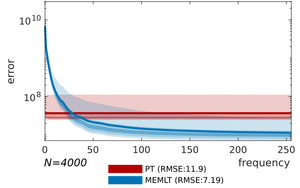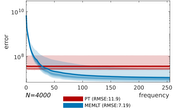Information
- Publication Type: Journal Paper with Conference Talk
- Workgroup(s)/Project(s):
- Date: July 2019
- Journal: Computer Graphics Forum
- Volume: 38
- Open Access: yes
- Number: 4
- Lecturer: Adam Celarek
- Event: Eurographics Symposium on Rendering 2019
- DOI: 10.1111/cgf.13775
- Call for Papers: Call for Paper
- Publisher: The Eurographics Association and John Wiley & Sons Ltd.
- Conference date: 10. July 2019 – 12. July 2019
- Pages: 111 – 121
- Keywords: measuring error, light transport, global illumination
Abstract
This paper proposes a new methodology for measuring the error of unbiased physically based rendering algorithms. The current state of the art includes mean squared error (MSE) based metrics and visual comparisons of equal-time renderings of competing algorithms. Neither is satisfying as MSE does not describe behavior and can exhibit significant variance, and visual comparisons are inherently subjective. Our contribution is two-fold: First, we propose to compute many short renderings instead of a single long run and use the short renderings to estimate MSE expectation and variance as well as per-pixel standard deviation. An algorithm that achieves good results in most runs, but with occasional outliers is essentially unreliable, which we wish to quantify numerically. We use per-pixel standard deviation to identify problematic lighting effects of rendering algorithms. The second contribution is the error spectrum ensemble (ESE), a tool for measuring the distribution of error over frequencies. The ESE serves two purposes: It reveals correlation between pixels and can be used to detect outliers, which offset the amount of error substantially.Additional Files and Images
Additional images and videos
Additional files
 paper_preprint:
Paper
paper_preprint:
Paper
 presentation:
Slides from the presentation at EGSR
presentation:
Slides from the presentation at EGSR
 supplemental_material:
Additional examples, experiments and similar.
supplemental_material:
Additional examples, experiments and similar.
Weblinks
- Git repository
Git repository with the implementation of the error spectrum ensemble and short rendering generator. - DOI: 10.1111/cgf.13775
BibTeX
@article{celarek_adam-2019-qelta,
title = "Quantifying the Error of Light Transport Algorithms",
author = "Adam Celarek and Wenzel Jakob and Michael Wimmer and Jaakko
Lehtinen",
year = "2019",
abstract = "This paper proposes a new methodology for measuring the
error of unbiased physically based rendering algorithms. The
current state of the art includes mean squared error (MSE)
based metrics and visual comparisons of equal-time
renderings of competing algorithms. Neither is satisfying as
MSE does not describe behavior and can exhibit significant
variance, and visual comparisons are inherently subjective.
Our contribution is two-fold: First, we propose to compute
many short renderings instead of a single long run and use
the short renderings to estimate MSE expectation and
variance as well as per-pixel standard deviation. An
algorithm that achieves good results in most runs, but with
occasional outliers is essentially unreliable, which we wish
to quantify numerically. We use per-pixel standard deviation
to identify problematic lighting effects of rendering
algorithms. The second contribution is the error spectrum
ensemble (ESE), a tool for measuring the distribution of
error over frequencies. The ESE serves two purposes: It
reveals correlation between pixels and can be used to detect
outliers, which offset the amount of error substantially.",
month = jul,
journal = "Computer Graphics Forum",
volume = "38",
number = "4",
doi = "10.1111/cgf.13775",
publisher = "The Eurographics Association and John Wiley & Sons Ltd.",
pages = "111--121",
keywords = "measuring error, light transport, global illumination",
URL = "https://www.cg.tuwien.ac.at/research/publications/2019/celarek_adam-2019-qelta/",
}


 paper_preprint
paper_preprint
